Sports and athletics push the boundaries of physical and mental endurance, demanding precision, strength, and resilience. For individuals using prosthetic limbs, the challenge is even greater—but so is the potential for achievement. High-performance prosthetics have revolutionized the way athletes compete, offering specialized designs that enhance mobility, agility, and power.
Whether it’s a sprinter setting new records, a climber scaling new heights, or a swimmer gliding effortlessly through water, high-performance prosthetics are enabling athletes to pursue their passion with confidence. This article delves into the world of athletic prosthetics, exploring how they are designed, what sets them apart, and how they can transform the sporting experience for users.
Understanding the Role of High-Performance Prosthetics in Sports
Prosthetics designed for athletic use are fundamentally different from everyday prosthetics. They are tailored to specific sports, taking into account the unique movements, forces, and challenges each activity demands. These prosthetics are not just tools; they are precision instruments that allow athletes to push their limits and achieve peak performance.
The Evolution of Athletic Prosthetics
The journey of athletic prosthetics began with simple designs aimed at restoring basic mobility. Over the years, advancements in materials, engineering, and biomechanics have transformed them into sophisticated devices capable of delivering high performance.
Modern athletic prosthetics often incorporate lightweight materials like carbon fiber, which offer strength and flexibility while minimizing weight.
The integration of advanced technologies, such as microprocessors and shock-absorbing systems, further enhances functionality, enabling athletes to perform complex movements with ease and precision.
For businesses, staying at the forefront of this evolution means investing in research and development to create cutting-edge solutions that cater to the unique needs of athletes. Highlighting these innovations in product offerings can position your brand as a leader in the field of high-performance prosthetics.
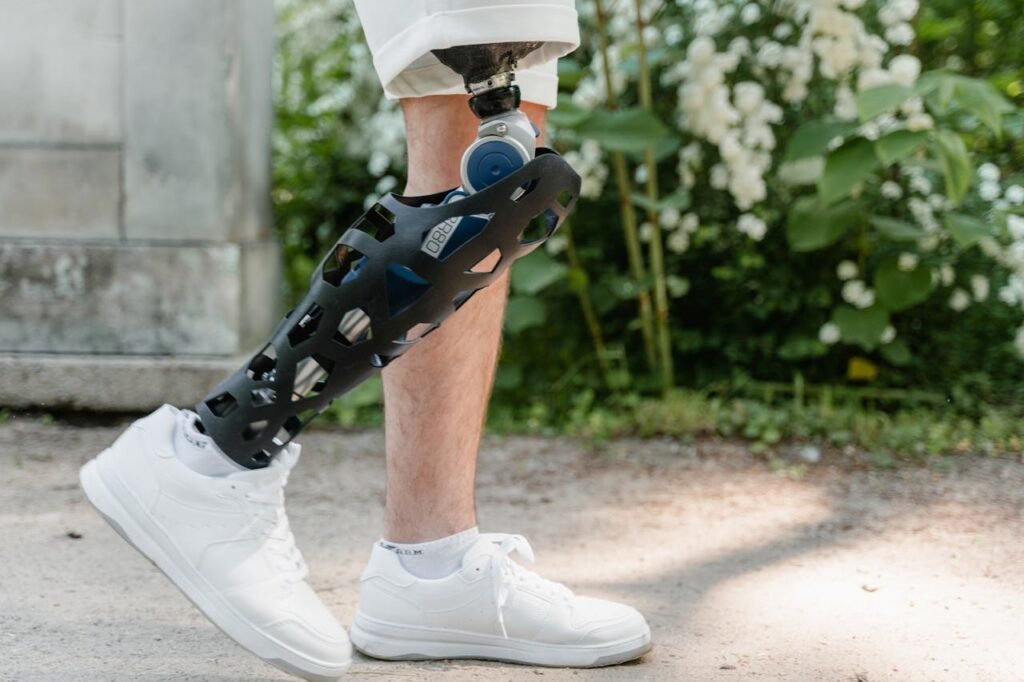
Redefining Accessibility in Athletics
One of the most transformative aspects of high-performance prosthetics is their ability to redefine accessibility in sports. By offering specialized designs tailored to various activities, these prosthetics allow individuals with limb differences to participate in sports that were previously out of reach.
For businesses, this represents an opportunity to innovate and cater to a diverse range of athletic needs. Creating prosthetics that address specific sports—whether it’s sprinting, swimming, climbing, or team sports—opens new markets and positions the company as a leader in adaptive sports technology.
Strategic collaborations with athletes during the design phase can provide valuable insights into the practical challenges they face, ensuring that the final product aligns with real-world demands.
Pioneering Adaptive Innovation
The role of high-performance prosthetics in sports goes beyond enhancing individual performance. These devices are catalysts for broader innovation, pushing the boundaries of material science, biomechanics, and engineering.
Every new development in prosthetic design has the potential to influence mainstream sports equipment, creating a cross-pollination of ideas that benefits the entire industry.
For instance, the energy-return mechanisms used in running blades have inspired shock-absorption technology in athletic footwear. Similarly, advancements in lightweight materials for prosthetics have influenced the design of helmets, protective gear, and even bicycles.
Businesses that invest in R&D for high-performance prosthetics not only gain a competitive edge in the prosthetics market but also contribute to innovation that transcends adaptive sports.
Fostering Inclusion and Representation
High-performance prosthetics play a critical role in fostering inclusion within the sports community. By enabling athletes with limb differences to compete at the highest levels, these devices challenge stereotypes and redefine what is possible.
For businesses, contributing to this movement requires more than just designing exceptional products. It involves actively advocating for inclusivity and representation, both within the company and in the broader sports ecosystem.
Supporting initiatives like adaptive sports programs, sponsoring athletes with disabilities, or partnering with organizations that promote inclusivity can amplify this impact.
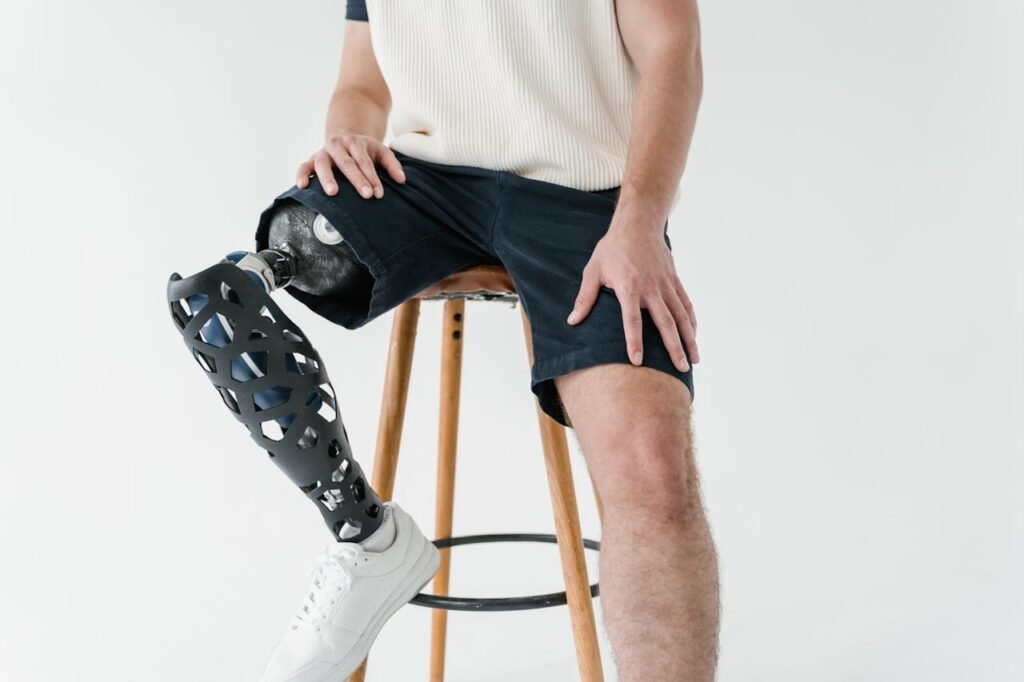
Designing for Specific Sports
Each sport presents distinct challenges and demands, and prosthetics must be tailored accordingly to optimize performance. From sprinting to swimming, climbing to cycling, the design of a prosthetic limb can significantly influence an athlete’s success.
Sprinting and Running
For sprinters and runners, speed and energy efficiency are paramount. Prosthetics for these athletes often feature blade-like designs made of carbon fiber, which mimic the spring-like action of a human foot. These blades store and release energy with each step, allowing athletes to propel forward with minimal effort.
The length, curvature, and stiffness of the blade can be customized to suit an athlete’s running style and performance goals. Businesses that offer personalized fittings and adjustments for these prosthetics ensure that users achieve the perfect balance between speed and control.
Swimming
Swimming prosthetics must perform effectively in water, focusing on buoyancy, resistance, and propulsion. Designs often include fins or streamlined shapes that reduce drag and enhance movement through the water.
Materials used in swimming prosthetics must resist corrosion and maintain their functionality in wet environments. For athletes transitioning between swimming and other activities, modular systems allow for quick changes between aquatic and land-based components.
For businesses, emphasizing the versatility and durability of swimming prosthetics can attract athletes who seek seamless integration across different environments.
Climbing and Mountaineering
Climbing and mountaineering require prosthetics that combine durability, precision, and adaptability. Athletes in these sports depend on their prosthetics to grip holds securely, navigate uneven terrain, and withstand immense forces during ascents and descents.
Prosthetics for climbing often feature specialized attachments like spiked tips, textured surfaces, or adjustable angles to provide a secure grip on various surfaces, from rock to ice. Lightweight materials such as aluminum alloys and reinforced composites are commonly used to reduce fatigue during extended climbs.
Customizability is crucial in climbing prosthetics, allowing athletes to tailor their devices to different routes and conditions. For example, a climber might switch between attachments designed for cracks, edges, or overhangs, ensuring optimal performance in any scenario.
Businesses that provide modular options and advanced grip technology can appeal to this niche yet growing market.
Cycling
Cyclists require prosthetics that ensure a smooth, continuous transfer of energy to the pedals while maintaining stability and comfort. For lower-limb amputees, this means prosthetics with shock absorption, rotational flexibility, and precise alignment.
Upper-limb cycling prosthetics often include attachments that securely grip handlebars while allowing for maneuverability and control. Aerodynamic designs can further enhance performance by reducing drag, which is especially critical in competitive cycling.
Businesses can cater to cyclists by offering solutions that emphasize both power transfer and ergonomic design. Highlighting the benefits of prosthetics tailored for endurance and speed ensures your offerings resonate with this audience.
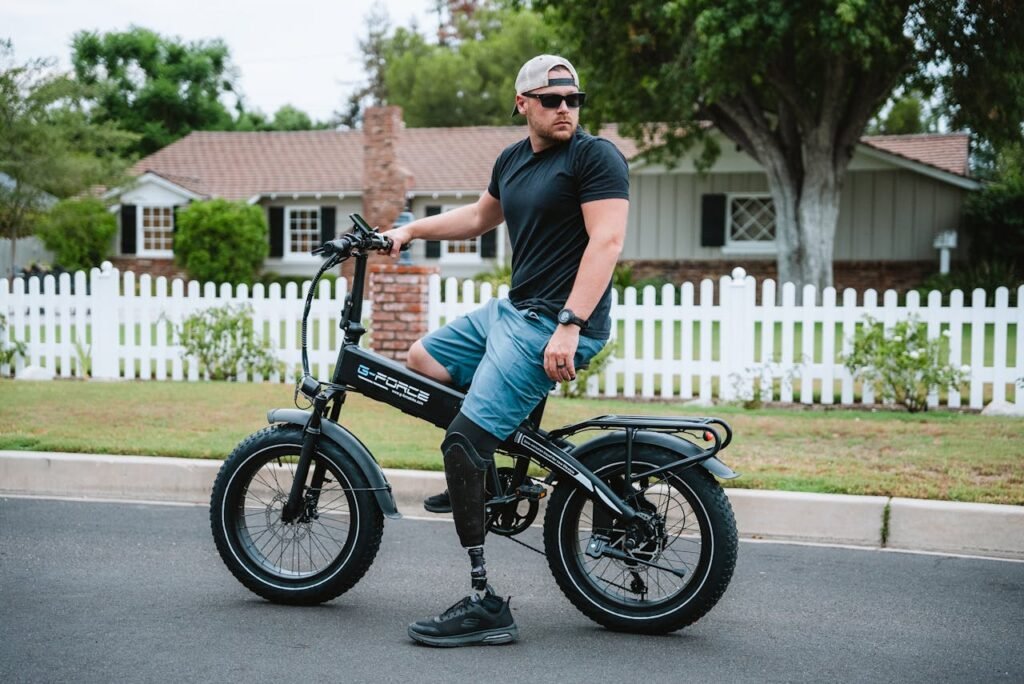
The Science Behind High-Performance Prosthetics
The development of athletic prosthetics is deeply rooted in biomechanics and engineering, blending science and technology to create devices that enhance human performance. Understanding the principles behind these innovations helps businesses refine their designs and communicate their value to athletes.
Biomechanics and Motion Analysis
The foundation of high-performance prosthetics lies in understanding how the body moves during specific activities. Motion analysis systems, which use sensors and cameras to track joint angles, forces, and muscle activity, provide valuable insights into how athletes interact with their prosthetics.
For example, analyzing a sprinter’s gait can reveal areas where energy is being lost or unevenly distributed. This data can inform adjustments to the prosthetic’s shape, stiffness, or alignment, ensuring maximum efficiency and comfort.
Businesses that incorporate biomechanical analysis into their fitting process can deliver more personalized solutions, positioning themselves as leaders in user-centered design.
Advanced Materials and Manufacturing
The materials used in high-performance prosthetics play a critical role in their functionality. Carbon fiber, for instance, is a popular choice for its lightweight yet durable properties. Other materials, such as titanium and high-strength polymers, are used in components that require added resilience or flexibility.
Manufacturing techniques like 3D printing have also revolutionized the industry, allowing for rapid prototyping and precise customization. This technology enables businesses to create prosthetics that are not only functional but also tailored to an athlete’s unique anatomy and performance goals.
Highlighting these materials and manufacturing methods in your marketing efforts can reinforce the quality and innovation behind your products, building trust with athletes and coaches.
Integration of Smart Technologies
High-performance prosthetics are increasingly incorporating smart technologies, such as sensors, microprocessors, and artificial intelligence (AI), to enhance functionality and adaptability. These innovations allow prosthetics to adjust in real time based on an athlete’s movements, providing a more natural and efficient experience.
For example, a microprocessor-controlled knee can sense changes in terrain or speed, automatically adjusting resistance to ensure stability during high-impact activities like running or jumping.
Similarly, upper-limb prosthetics equipped with myoelectric sensors can interpret muscle signals, allowing for precise and intuitive movements during tasks like gripping or pushing.
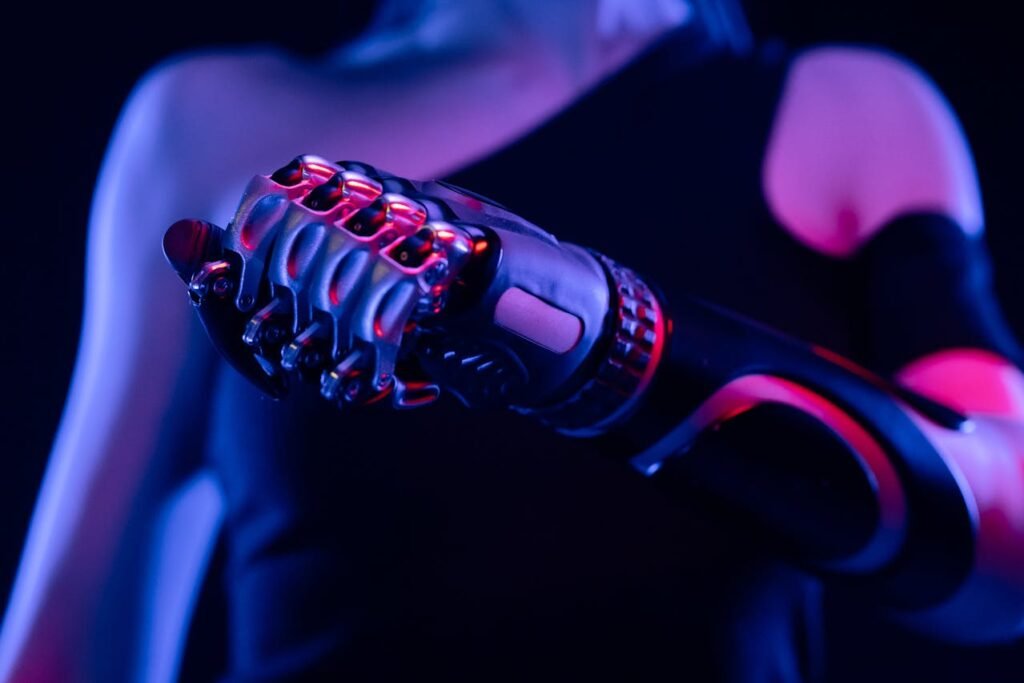
AI algorithms take this a step further by learning an athlete’s patterns and preferences, optimizing performance over time. For instance, a prosthetic might adapt its response based on the user’s running cadence, improving energy efficiency and reducing fatigue.
Businesses that invest in smart technologies position themselves at the forefront of the industry, attracting athletes who demand cutting-edge solutions to elevate their performance. Highlighting the practical benefits of these technologies, such as enhanced safety or reduced injury risk, can resonate deeply with users.
Personalizing the Prosthetic Experience
No two athletes are the same, and their prosthetics shouldn’t be either. Personalization is key to ensuring that a prosthetic limb meets the specific needs, goals, and preferences of the user. From fitting to functionality, every detail matters in creating a device that feels like an extension of the athlete’s body.
Custom Fittings for Optimal Performance
The fit of a prosthetic limb is critical to its effectiveness, particularly in high-performance settings where precision and stability are paramount. Custom fittings take into account the athlete’s unique anatomy, activity level, and biomechanical requirements, resulting in a prosthetic that enhances comfort and reduces the risk of injury.
For lower-limb prosthetics, this might involve tailoring the socket to ensure even weight distribution or adjusting the alignment for optimal energy transfer. Upper-limb prosthetics, meanwhile, may require customized grip patterns or wrist angles to accommodate specific sports.
For businesses, offering advanced fitting services—such as 3D scanning or motion analysis—demonstrates a commitment to excellence and attention to detail. These services not only improve the user experience but also set your brand apart in a competitive market.
Modular Designs for Versatility
Athletes often participate in multiple sports or require prosthetics that can adapt to different environments. Modular designs provide the flexibility to swap out components, such as feet, hands, or attachments, based on the activity at hand.
For instance, a runner might switch between a sprinting blade for the track and a durable foot for trail running. Similarly, a climber could alternate between attachments designed for rock faces and ice surfaces. This adaptability ensures that athletes are always equipped with the right tools for their pursuits.
Businesses that emphasize the versatility of their products can appeal to a broader range of users, from multisport athletes to those exploring new activities. Showcasing how modular designs simplify transitions and enhance performance adds significant value to your offerings.
The Psychological Impact of High-Performance Prosthetics
While the physical benefits of athletic prosthetics are well-documented, their psychological impact is equally profound. For many athletes, using a high-performance prosthetic is about more than achieving physical milestones—it’s about reclaiming confidence, breaking barriers, and redefining what’s possible.
Building Confidence Through Performance
The ability to perform at a high level, whether it’s competing in a race or mastering a challenging climb, instills a sense of pride and accomplishment in athletes.
High-performance prosthetics enable users to push their boundaries and exceed expectations, proving that physical limitations don’t have to define their potential.
For businesses, capturing these stories of resilience and triumph can inspire others and demonstrate the transformative power of your products. Sharing testimonials or partnering with athletes to showcase their journeys highlights the emotional and motivational aspects of your prosthetics.
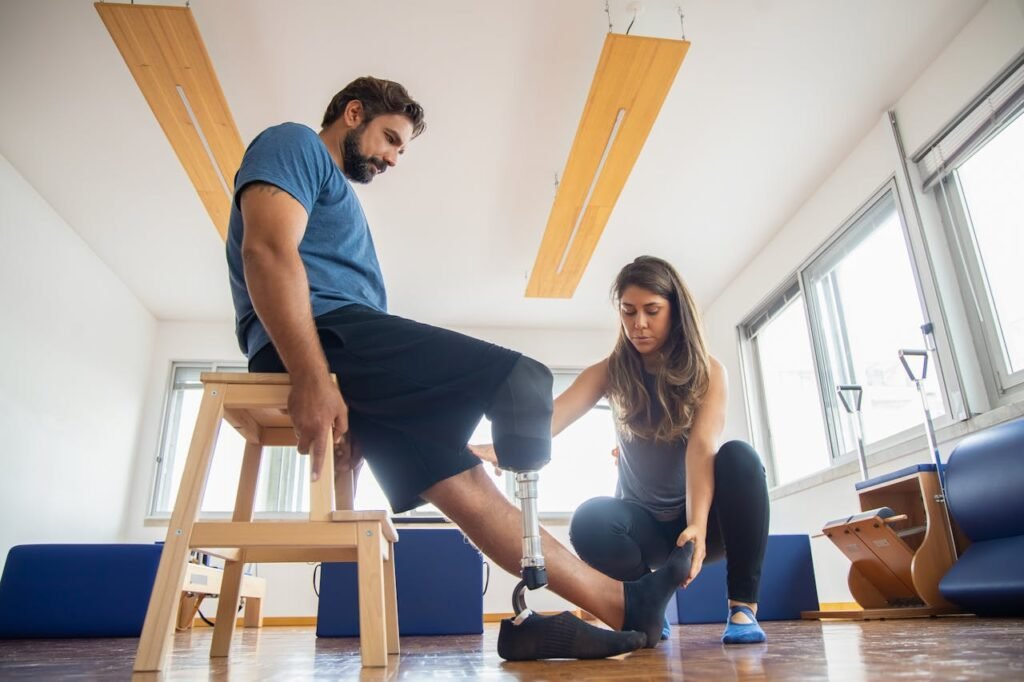
Creating a Community of Support
Sports and athletics are inherently social, bringing people together through shared experiences and camaraderie. For athletes using prosthetics, being part of a supportive community can enhance their sense of belonging and encourage them to pursue their goals with determination.
Businesses can foster this sense of community by organizing events, sponsoring competitions, or creating platforms where athletes can connect and share insights.
Highlighting the collective achievements of users not only builds brand loyalty but also reinforces the idea that prosthetics are tools for empowerment and connection.
Breaking Barriers in Competitive Sports
High-performance prosthetics are not only transforming individual experiences but are also reshaping the landscape of competitive sports. As technology evolves, athletes with prosthetics are achieving feats once thought impossible, competing at elite levels, and challenging societal perceptions of disability.
Leveling the Playing Field
Competitive sports have historically been seen as arenas where physical advantages often define success. The introduction of advanced prosthetics has helped level the playing field for athletes with limb differences, allowing them to compete on equal terms with their peers.
For instance, specialized running blades have enabled sprinters to set world records and compete in both Paralympic and mainstream events. Similarly, adaptive cycling prosthetics have allowed athletes to achieve unparalleled speeds, breaking records and winning championships.
Businesses that design prosthetics for competitive athletes must meet stringent standards for precision, durability, and performance. Collaborating with professional athletes during the design process ensures that the devices are tested and refined in real-world competitive scenarios.
Advocacy and Visibility
Athletes using high-performance prosthetics often become ambassadors for inclusion, demonstrating that physical differences are not barriers to excellence. Their visibility in global events such as the Paralympics or professional leagues helps shift societal perceptions and inspire future generations.
For businesses, partnering with these athletes is a powerful way to advocate for inclusivity and innovation. Sponsorships, co-branded campaigns, or public speaking engagements can amplify the message that prosthetics are tools for breaking barriers, not just aids for mobility.
The Role of Rehabilitation and Training
High-performance prosthetics unlock incredible potential, but achieving optimal results requires training and rehabilitation. Athletes must learn to adapt to their new devices, develop strength and technique, and refine their performance to match their goals.
Specialized Training for Prosthetic Athletes
Using a high-performance prosthetic is a skill that demands practice and guidance. Athletes often work closely with trainers, physical therapists, and prosthetists to understand the mechanics of their device and integrate it into their movements.
For example, a runner using a carbon-fiber blade must learn how to distribute their weight, control their stride, and adjust their posture for maximum efficiency. Similarly, a swimmer using a specialized fin prosthetic must practice techniques to optimize propulsion and streamline their movements.
Businesses can support this process by providing resources such as training guides, video tutorials, or access to expert coaches. Offering post-purchase support, including consultations and adjustments, ensures athletes can unlock the full potential of their prosthetic.
Rehabilitation as a Foundation for Success
Rehabilitation is an essential part of an athlete’s journey, particularly for those transitioning to a high-performance prosthetic for the first time. This phase focuses on building strength, improving balance, and addressing any challenges in adapting to the new device.
For businesses, collaborating with rehabilitation centers or offering in-house services adds immense value to the user experience. Providing tailored programs that address the unique needs of athletes fosters trust and positions your brand as a partner in their journey.
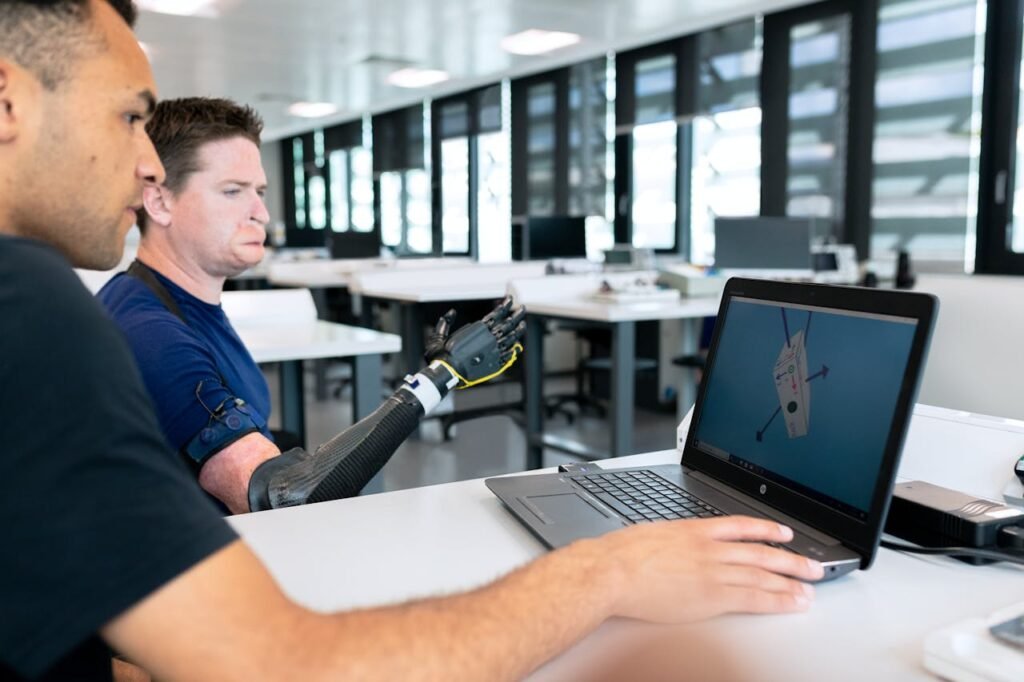
Looking to the Future of Athletic Prosthetics
The future of high-performance prosthetics holds endless possibilities, driven by advancements in technology, materials, and user-centered design. As innovation continues, the gap between natural and artificial limbs will narrow, empowering athletes to achieve even greater feats.
The Rise of Biomechanical Integration
Emerging technologies, such as neural interfaces and biomechanical integration, are set to revolutionize prosthetics. Neural interfaces allow prosthetics to connect directly with the user’s nervous system, enabling intuitive control and sensory feedback.
This breakthrough promises unprecedented precision and a more seamless connection between the athlete and their device.
For instance, an athlete using a neural-controlled prosthetic arm might experience tactile sensations, allowing them to adjust their grip strength based on the texture of an object. Similarly, neural integration in lower-limb prosthetics could improve balance and coordination, enhancing performance in activities like gymnastics or martial arts.
Businesses investing in these technologies will shape the future of athletic prosthetics, driving the next wave of innovation and setting new benchmarks for performance.
Expanding Accessibility and Affordability
As technology advances, making high-performance prosthetics more accessible and affordable is crucial. Businesses must explore cost-effective manufacturing techniques, such as 3D printing, and leverage economies of scale to lower prices without compromising quality.
Expanding partnerships with non-profits, government agencies, and sports organizations can further democratize access, ensuring that all athletes—regardless of financial background—can benefit from cutting-edge prosthetic technology.
Conclusion
High-performance prosthetics are more than tools—they are gateways to possibility, redefining what athletes can achieve in sports and beyond. By blending innovation, customization, and user empowerment, these devices enable individuals to push boundaries, break records, and inspire others to reach for their dreams.
For businesses, the opportunity to contribute to this transformative journey is both a privilege and a responsibility. By prioritizing quality, investing in research, and fostering connections within the athletic community, companies can create prosthetics that not only enhance performance but also change lives.
As we look to the future, the potential for high-performance prosthetics in sports and athletics is limitless. Together, athletes, designers, and manufacturers will continue to reshape the playing field, proving that determination, technology, and creativity know no bounds.



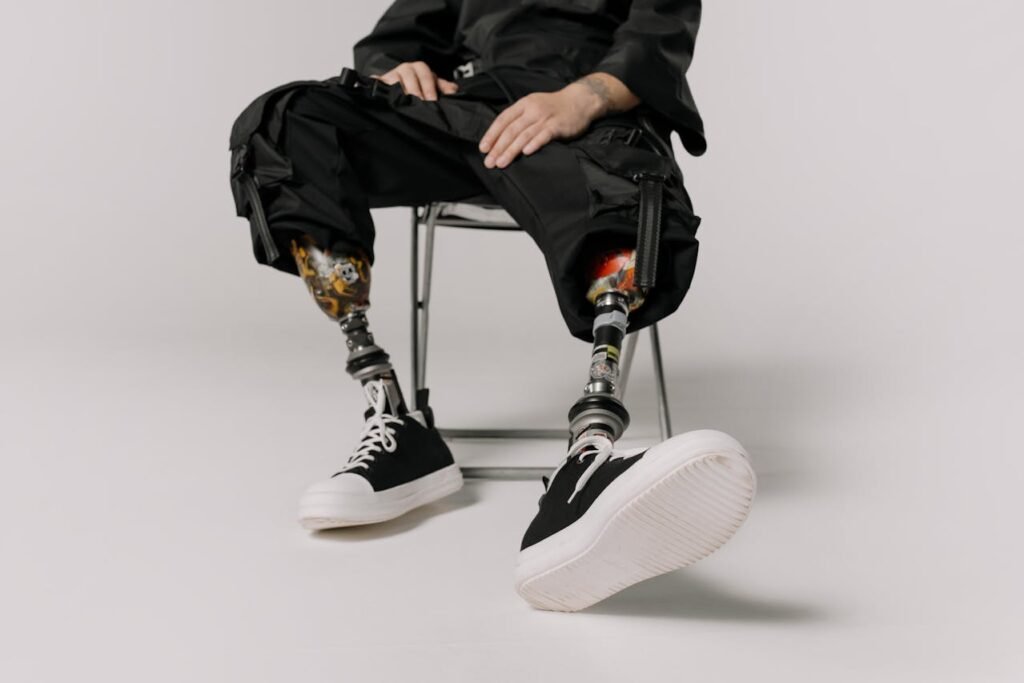
Your article provides valuable insights into high-performance prosthetics for sports and athletics. It’s inspiring to see how advanced technology is empowering athletes to push their limits and achieve their goals.